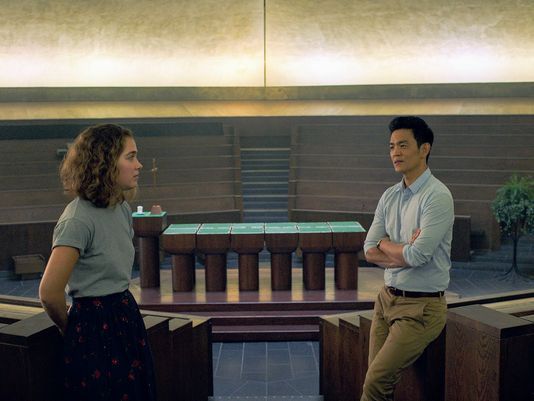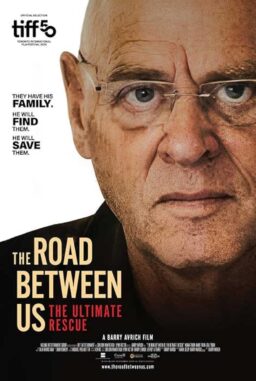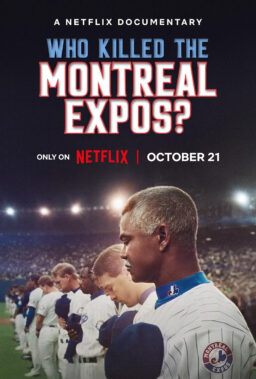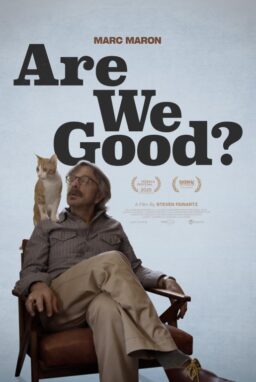I still fondly remember those two weeks I spent in Chicago before attending 2010 Ebertfest. Going around here and there in the city during that time, I was constantly excited by many impressive things to absorb and remember, and I was particularly impressed by the various styles of numerous buildings in the city. While I was fascinated with several lovely historical buildings designed by Daniel Burnham and Louis Sullivan, I was especially enthralled by a number of modernist architectural works designed by Ludwig Mies van der Rohe and other prominent modernist architects, and I tried to capture the awe and wonder I felt from all these gorgeous buildings as much as I could with my small digital camera. I also took several guided tours for more knowledge and understanding, and these tours certainly made me see more new things from the buildings and architecture of Chicago.
When I saw “Columbus” for the first time in October 2017, I felt a similar kind of excitement and enthusiasm. Its simple human drama leisurely rolling in the foreground, the movie often pays attentions to several notable modernist works of architecture in Columbus, Indiana, and it is interesting to observe how the movie attempts to do exactly what I tried to do during my Chicago trip. It wants us to look at closer those distinctive works and then reflect on them. We come to find ourselves gradually absorbed into its calm, meditative mood, while also engaged in the human connection slowly developed between two total strangers at the center of its story.
They are Casey (Haley Lu Richardson) and Jin (John Cho), and we get to know about their contrasting but similarly difficult private situations bit by bit. During his visit to Columbus for a lecture, Jin’s Korean father, who is a well-known architecture professor, suddenly becomes quite ill and then is sent to a local hospital while being in comatose state. Jin, who has recently been in Seoul for his translation work, soon comes to Columbus like any dutiful son would, but he does not feel particularly concerned about his father’s current health state due to their estranged relationship. As shown from his subsequent conversation with his father’s longtime assistant Eleanor (Parker Posey), he and his father have never talked with each other for more than a year, and he is actually concerned more about his ongoing translation work in Seoul. If his father does not show any sign of recovery during next several days, he may have to give up his work, and he will probably have to stay in Columbus longer than planned because, well, he is expected to be near his father if his father is going to die.
In case of Casey, her life has already been stuck in Columbus for years. Since graduating from her high school around a year ago, she has aspired to study architecture in college, and she recently came across a nice chance for that, but she knows too well that her current circumstance is not that good to say the least. Besides her poor economic status, her mother Maria (Michelle Forbes) has recently recovered from drug addiction, and it seems to Casey that her mother still needs more of her support and care, though her mother looks mostly fine as having two different part-time jobs.

While working as a page in the Cleo Rogers Memorial Library, which is designed by I.M. Pei, Casey often spends time with her co-worker/friend Gabriel (Rory Culkin), a smart lad who has lots of things to talk about. On one day, Casey and Jin encounter each other by coincidence at a spot near to the First Christian Church, which is designed by Eliel Saarinen. At first, they simply share cigarette as fellow smokers, but then their accidental conversation becomes a little more casual and intimate as Casey tells Jin that she was supposed to attend the lecture of Jin’s father. After this brief encounter, they find themselves spending more time with each other, and Casey is eager to tell many things as showing him her several favorite buildings in Columbus, although he is not very interested in architecture unlike his father.
The first place they go together is the Irwin Conference Center, which is designed by Eero Saarinen, the son of Eliel Saarinen. Shortly after Casey tell Jin about why it is so important, Jin asks her how she really feels about this famous building which is her second favorite building in the city, and the movie makes an interesting choice in presenting her subsequent reply to us. As the camera is looking at her from the distance, we cannot hear any word from her, but we can sense her enthusiasm while observing whatever is conveyed via her brightened face, and that is more than enough for us.
As looking around several other interesting works of architecture such as the North Christian Church designed by Eero Saarinen, Jin and Casey come to reveal more of their respective personal thoughts and feelings to each other. When she takes him to her own private place which is also her third favorite building in the city, Casey confides to Jin about her difficult time with her mother’s drug addiction, and we come to sense more of her constant worry and concern over her mother’s wellbeing. Although he still feels distant to his father, Jin cannot help but feel the presence of his father as staying in a posh inn room where his father stayed before his illness, and we come to understand how much he is conflicted over whether he should stay near his father.

“Columbus” is the first feature film from director/writer/editor Kogonada, a Korean American filmmaker who has been known well for a number of enlightening video essays on the works of the great filmmakers including Robert Bresson, Wes Anderson, Terrence Malick, Yasujirō Ozu, and Stanley Kubrick. I belatedly checked his several video essays only after watching the movie, and I enjoyed how clearly and succinctly he demonstrates distinguishable visual touches even without explanatory narration. For instant, I was entertained a lot by his video essay on the common cases of mise-en-scène observed from Kubrick’s films, and I was also impressed much by another video essay of his which brilliantly presents the recurring elements in Ozu’s films.
As far as I can see from “Columbus,” Kogonada assimilates well whatever he learned from his thoughtful and meticulous film analysis. While there are a few moments of emotional tension, the movie never disrupts its low-key tone even during these moments, and it subtly and steadily establishes the serene ambience surrounding its two main characters and the city in a way reminiscent of Ozu’s films. As his cinematographer Elisha Christian’s camera usually maintains its formal static position, Kogonada constantly attracts our attention via precise scene composition and thoughtful blocking, and we come to notice a number of recurring visual aspects such as the frequent use of central focus on the screen, which is instantly linked with many strikingly formal visual moments of the works of Kubrick and Anderson.
Kogonada also draws well-rounded performances from his main cast members. John Cho, who drew my attention for the first time when he appeared in “Harold & Kumar Go to White Castle” (2004), shows another side of his talent here in this film, and he has an unaffected onscreen chemistry with his co-star Haley Lu Richardson, who previously played a substantial supporting character in “The Edge of Seventeen” (2016) and will probably advance further considering her charming presence on the screen. While Parker Posey has a couple of good moments to shine as the devoted assistant of Jin’s father, Rory Culkin and Michelle Forbes are also fine as two main figures in Casey’s daily life, and Forbes has a small poignant moment when her character and Casey show more honesty and love to each other later in the film. They seldom mention the difficult personal past between them, but it is probably as interesting as that tumultuous mother and daughter relationship in “Lady Bird” (2017).
Although “Columbus” may require some patience from you due to its slow narrative pacing and restrained storytelling, it is a rewarding cinematic experience nonetheless, and I confirmed that as I re-examined it a couple of times a few days ago. While there are many sublime visual moments to intrigue you, there are also little intimate human moments to touch you, and the overall result is a quiet but mesmerizing work about life and architecture which is also one of the best films of 2017. It surely made me look into those photographs of buildings and architectures I shot during my 2010 Chicago trip, and now, to be frank with you, I am about to do that again.











